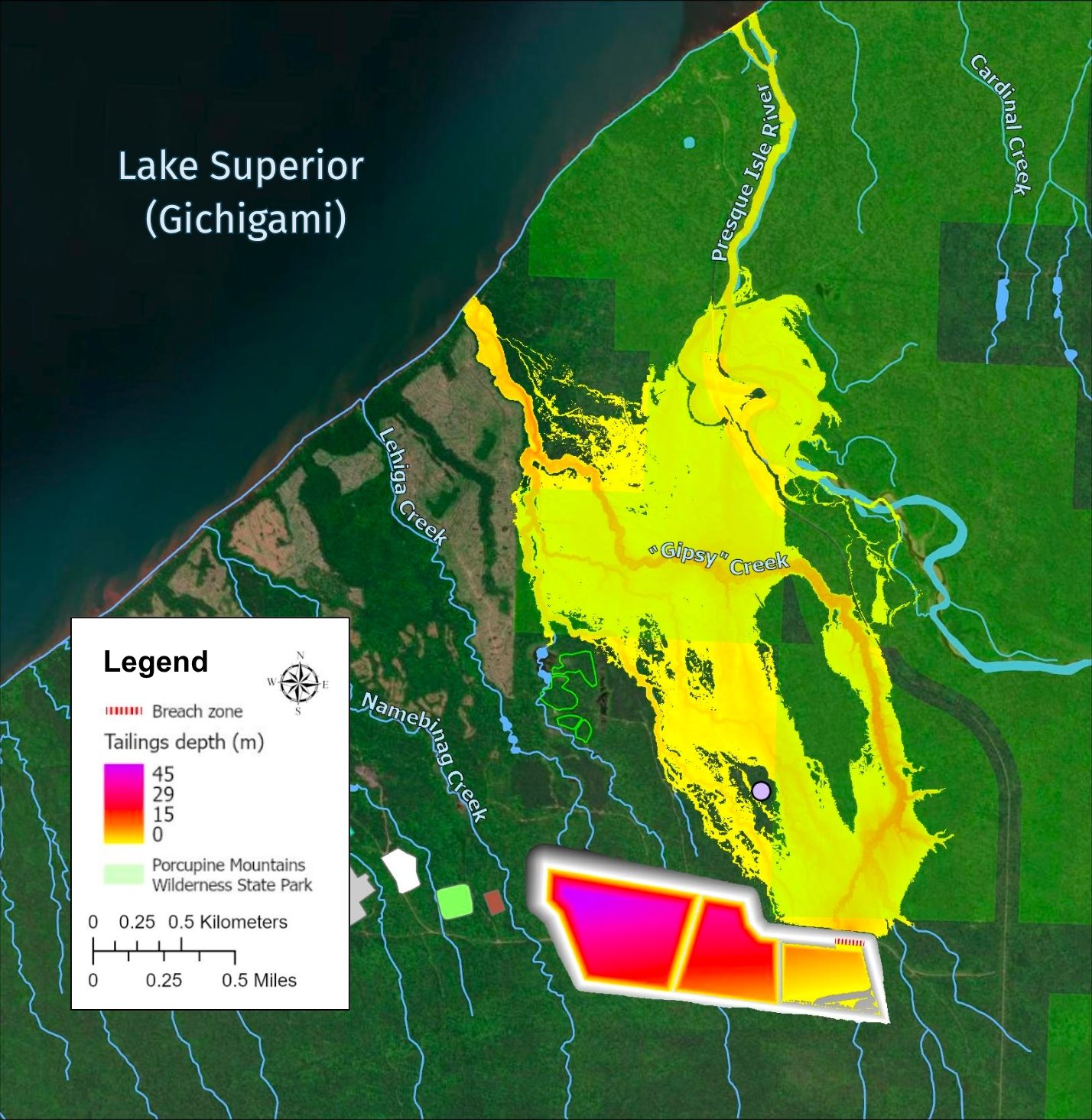The Copperwood Project is a proposed copper sulfide mine at the juncture of Porcupine Mountains State Park, the North Country Trail, and Lake Superior. It would be the closest sulfide mine to Lake Superior in history, with plans to mine up to 100 feet from the lake’s surface. Copperwood plans to host operations directly adjacent to the Presque Isle Scenic Area, clearcutting many acres of forest and filling over 60 acres of wetlands.



A few ways in which these characteristics are showcased are through Porcupine Mountains State Park, located on Lake Superior near Ontonagon, and the North Country Trail, the longest National Scenic Trail in the US and a recently designated piece of the National Parks System. Unfortunately, with natural beauty also often comes resource extraction, and the Superior watershed has been plagued with more than its fair share of mines, logging operations, and more.


which means that 1.5% of what they pull out if the ground will be copper, and the rest will be sulfide-bearing mine waste that will need to be stored, onsite, permanently. To do so, the mining company is currently destroying wetlands to construct a 320-acre tailings pond to hold the waste, which will sit approximately 2 miles from the Lake Superior shoreline on terrain sloping toward the lake.
Further, the immediate area in Ontonagon and Gogebic counties has seen two separate severe, 1-in-1,000-year storms in the past decade which have caused significant damage to roads, bridges, and infrastructure (1, 2). This tailings dam is designed to withstand only 1-in-100-year storms (see comment 52), which are much less severe; this makes a rupture of the tailings dam likely.
This model from the Great Lakes Indian Fish and Wildlife Commission (GLIFWC) shows the path of destruction when the eastern portion of the dam collapses.

A study done in 2012 found that, of the 14 copper sulfide mines producing nearly all copper in the United States, 92% failed to contain seepage, and every single one spilled toxic waste into the surrounding environment. Some like to refer to Marquette County’s Eagle Mine as the model for environmentally sound mining, yet even Eagle Mine has experienced spills and several instances of high levels of chronic wastewater toxicity.
Highland Copper was considered for a $50 million taxpayer-funded grant from the Michigan Strategic Fund's SOAR fund in 2024. That grant made it through the MSF, but was halted twice by the Michigan Senate Appropriations Committee due to massive public opposition and the corporate handout nature of the funding. It was revived again in 2025 as a budget earmark, which was again rejected by the Michigan legislature in October 2025.
Reeling from their continued underperformance in the private investor market, Copperwood Mine proponents are pushing harder than ever to use our state and federal taxpayer money to fund this dangerous project.
Highland Copper is also retaining at least 5 federal lobbyists to look for Copperwood funding in Washington, D.C. Make sure your reps know how you feel about that!
Copperwood’s lack of funding is their weakest point, so it's important to highlight our resistance in this area. Complete the action items below to voice your opposition to the project and show investors and state authorities that we won't stand for the destruction of our lakeshore.
For more information about the Copperwood Mine's impact and how it will, if built, affect our environment, economic and cultural wellbeing, visit our partners at Protecttheporkies.com. Make sure you're on both of our mailing lists to stay updated about this and other issues facing the Superior watershed.
As of about 4:00am Friday, October 3, 2025, the Michigan Legislature passed a budget which does not include $50 million in funding to benefit the Copperwood mine. This is a major win for all who have spoken up to resist this industrial attempt at resource extraction to the detriment of our environment and communities.
Let's be clear: the fight is not over. We must remain prepared for another attempt at pushing an iteration of this funding through. But in this moment, hug a tree and take a swim, for this is another battle won by the people. Then, be sure to call and thank the legislators for following through on this (suggested call script below)!
Copperwood is seeking taxpayer dollars in order to move forward with site preparation and infrastructure. We've compiled a list of action items you can take right now to put pressure on lawmakers and help prevent public funding for the Copperwood Mine:
Copperwood Grant Advocacy Two-Pager
Highland Copper Information:
2024 Highland Copper Corporate Presentation
2023 Highland Copper Financial Statement
General Copperwood Information:
2023 Copperwood Feasibility Study
2024 Porcupine Mountains State Park - Copperwood Mine Factsheet
Permits:
Copperwood Wetland Impacts Permit Application
2018 Copperwood Wetland Impacts Final Permit
2018 Mining Permit Public Comments and Responses
Additional Permitting Documents via MIEnviroPortal
MSF Grant:
March 2024 (FINAL) Michigan Strategic Fund Grant Proposal and Terms
January 2024 Michigan Strategic Fund Grant Proposal and Terms
